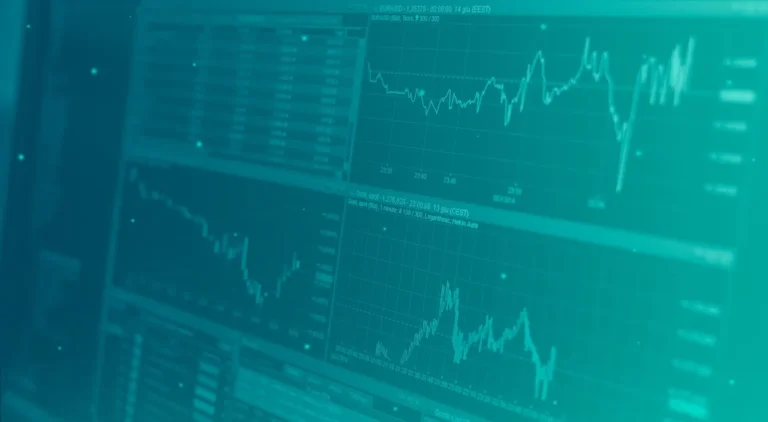Volatility is one of the most basic concepts in finance and one that gets often misinterpreted, which is, nonetheless, a concept of paramount importance to understand. It defines the degree of asset price volatility over time, which is commonly defined as standard deviation or variance. While volatility in high frequency is generally thought to be a risk, growth may also be in reach. Historical range affords investors a power to take more informed decisions and thereby exert a greater degree of market control on more solid leverage.
What is Volatility?
Volatility is the magnitude and range of price movements of an asset or market.
High Volatility: Large price swings in a short period (e.g., cryptocurrencies).
Low Volatility: Steady and predictable price movements (e.g., government bonds).
Volatility is just as much an outcome of the news-driven events across a broad area of specialty as it is an outcome of sentiment and economics-driven market forces, geopolitics, and the other.
Historical Volatility and Market Patterns
On the basis of analysis of historical volatility investors are able to identify and recognize the patterns of response of, for instance, some asset or market to, for example, a particular event.
Equity Markets:
By working over cyclical stretches of volatility (e.g., attributable to economic recession, financial turmoil, and sometimes to events unrelated to existence of or impact of one or the other), traditional stock markets now find themselves exposed to these types of episodes. [For instance] the 2008 Global Financial Crisis induced bank runs to generate extremely fast jumps that markets then recovered efficiently after the crisis.
Legendary “volatile” portfolio investors have achieved profits from volatility that increases over time.
Bond Markets:
Bonds generally exhibit lower volatility than stocks. Nevertheless, these intermittencies might also have the ability to occur under the forces of significant change of interest rate or unconsolidated credit shock, e.g., during the period of COVID-19 pandemic.
Commodities:
Geopolitical instability and supply-demand acreages are extremely susceptible to commodified products, gold and oil. Every example mentioned involved, for instance, especially erratic changes in prices in 2020 with a pandemic, all the way to negative, even negative prices (negative prices buy/rent time) for some time.
Cryptocurrencies:
Digital assets, in fact, seem to be the most volatile asset in the market in terms of price volatility, driven by speculation, regulatory developments and technological advances. Bitcoin, for example, has experienced several boom-and-bust cycles.
How Volatility Can Inform Investment Choices
Assessing Risk Tolerance:
Modelling of historical volatility is of interest to investors to be able to achieve portfolio risk appetite alignment. For instance, those individuals who are not yet, accustomed to large asset realignments, would “may” look for low-volatility (i.e., fixed-income and other types of bonds and securities) assets.
Diversification Strategy:
Source data showed that all asset classes are characterized by nonidentical behaviour during Periods of high market volatility. Portfolio risk can be reduced by portfolio diversification into equity, bond, real estate and commodity.
Timing and Entry Points:

Volatility often creates buying opportunities. As an example, market slumps (including crashes) may actually offer investment windows in which to buy the asset at lower cost.
Volatility as a Growth Indicator:
Historically, high volatility periods have, for the most part, been resolved with good market rallies. Learning this pattern can lead long term investors to wait for a time of market downturn.
Volatility Metrics to Watch
Standard Deviation: Quantifies the variability of returns from the mean return and estimates historical volatility of the asset retrospectively.
Beta: Indicates an asset’s volatility relative to the broader market. Being Beta 1.2, the asset is 20% more volatile than the market.
VIX (Volatility Index): For each day in a period of days and the corresponding day in the following week, a “Fear index”, reflecting the market sentiment for near-term volatility of a stock exchange [2], is computed.
Managing Volatility in Your Portfolio
Long-Term Perspective:
Based on the historical trends of the short-term volatility, it seems to be smoothening over time, as illustrated by, e.g., the case of equities. Just take care of your financial plan and not fall into the daily waltz in the market.
Asset Allocation:
Allocate assets based on risk tolerance and investment horizon. Young investors can still easily maintain a higher proportion of allocations in equities while, for example, older investors tend to prefer bonds and other less volatile assets.
Systematic Investment Plans (SIPs):

Pattern (systematic) investment plan (SIP) smoothing rollover effect of fluctuations in the value of an asset as a result of the asset’s recurrent nature for that particular asset/investment.
Maintain a reserve to be used if the asset is liquidated during a market meltdown.
Hedging Strategies:
Customizing options, futures, or diversification solely as a hedge to your portfolio during periods of high volatility.
Volatility Myths Debunked
Volatility Equals Risk: Volatility for its own sake is not necessarily (in)auspicious, yet it is generated in human behaviours, markets, and uncertainty. The true danger is not achieving your finance goals.
Avoid Volatility at All Costs: Conservative investments, i.e., bonds, are secure, typically they have, however, lower long term remuneration than in equity.
Conclusion
Volatility is a reality of money management, there’s no need to get hysterical. By analysing historical trends, an investor may postulate how an instrument is likely to respond under different market conditions in an effort to better arrive at decisions. Converting these market whirlwinds into possible expansion opportunities in terms of diversified portfolio, long-term strategy and tacit-strategic strategy is useful.
Volatility isn’t just a nuisance in the investing world, it’s a weapon. Master its application and it can be a powerful consort in your quest for gold.







